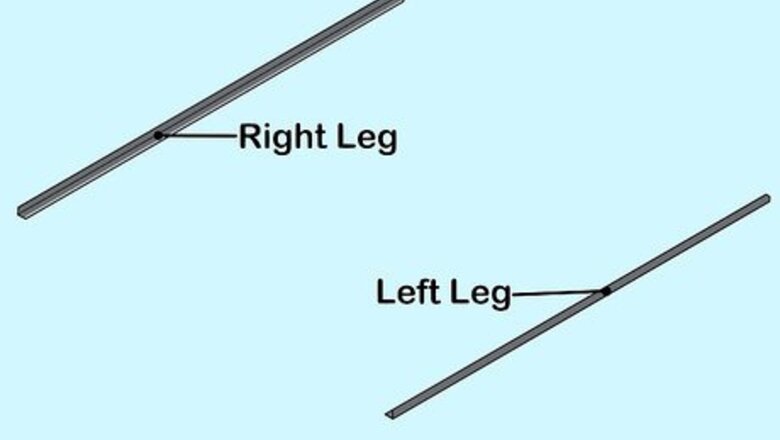
views
Assembling a Metal Bed Frame
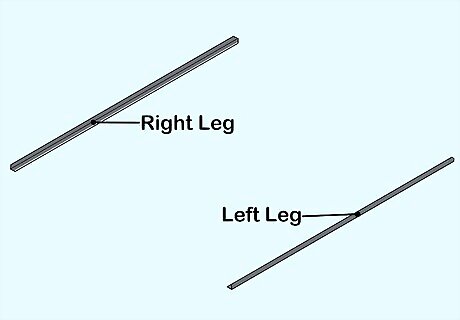
Set the frame legs across from each other. Most metal bed frames are comprised of 2 primary segments, the left leg and the right leg. Set these legs across from each other, leaving enough space in the center for the mattress itself.
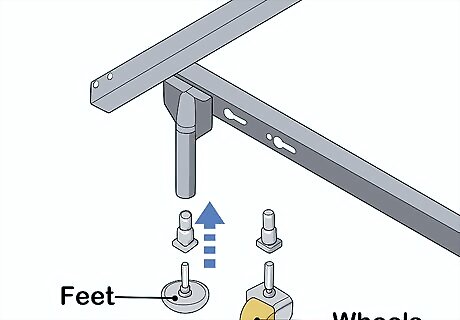
Attach feet or wheels to each of the frame legs. Look for short beams extending from each of the metal legs. If you’re assembling an immobile bed frame, connect the included plastic or rubber feet to the leg. If you’re assembling a mobile bed frame, connect the included roller wheels. For most bed frames, these should attach without any special hardware, though some models may require you to secure them with a screw and nut.
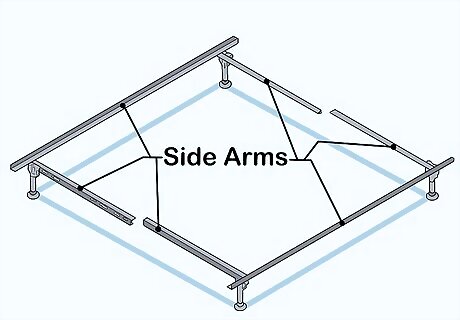
Pull the side arms out of the frame legs. For ease of packing and assembly, most metal bed frames house their side arms inside the metal legs themselves. As such, you simply need to pull the arms out of the legs and make sure they’re fully extended. If the legs do not contain already attached sidearms, you may need to attach the arms separately using screws and nuts.
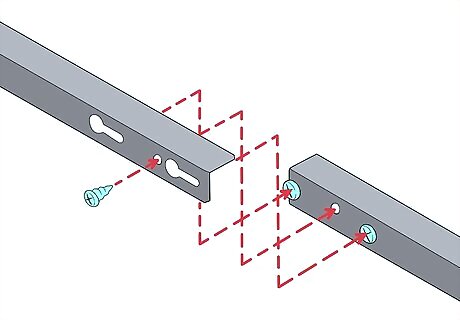
Lock the side arms together. Look for small holes and protruding nubs on the side arms and, if present, simply connect the side arms together by pushing the nubs though the holes. If your side arms only have holes, you may need to connect them together using screws and nuts or included metal plates. If you’re assembling an adjustable bed frame, use holes corresponding to the size of your mattress.
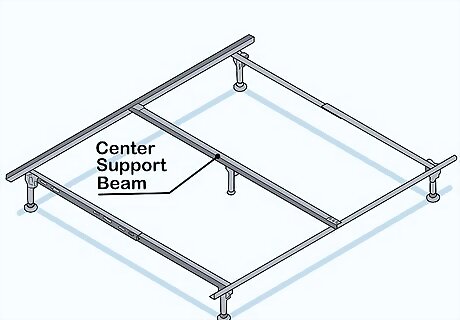
Attach a center support beam if necessary. Some metal bed frames, especially those that connect the side arms together using a metal plate, come with a center support leg. Make sure you connect any necessary wheels or feet to the leg, then lay it across the center of the bed frame. If your side arms or legs have grooves in the center, slide the ends of your center leg into them. Otherwise, attach them using screws and nuts.
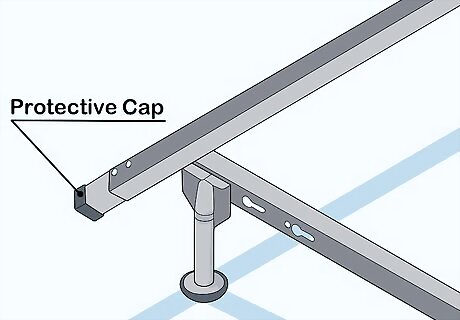
Place protective caps on the edge of the bed frame if necessary. If your bed frame leaves small, exposed pieces of metal on the corners, cover them with included protective caps. If your bed frame did not come with caps but has exposed metal, cover it with multiple layers of duct tape. Covering these spots will keep your from scraping your skin if you bump into the bed frame.
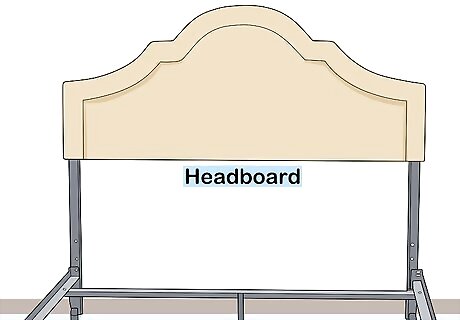
Connect a headboard or baseboard if desired. Some metal bed frames come with headboards or baseboards. If yours does, make sure the board is fully extended and, if necessary, attach any included legs to it using screws and nuts. For some metal frames, you can simply slide the board’s legs into slots on the main bed frame. For others, you’ll need to line the legs up with holes on the bed frame and attach them using screws and nuts.
Putting Together a Wooden Bed Frame
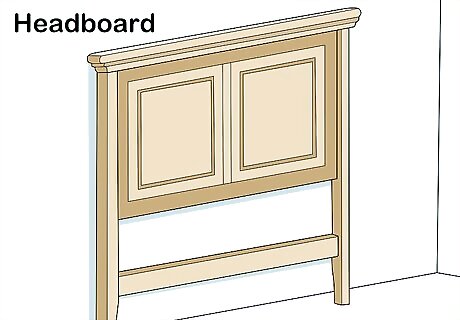
Place the headboard against the wall. For easier assembly, place your headboard (the taller wooden frame) up against a back wall or other durable surface. If possible, place it against the wall where it will sit when finished, since moving an assembled bed frame is not an easy task. Make sure the finished side of the frame points out, since that’s the side everybody will see. Some headboards can stand or lean on their own. If yours cannot, grab another person to hold it in place.
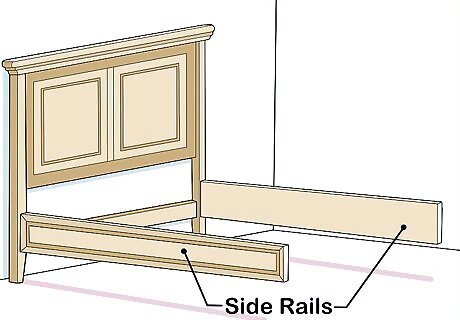
Attach the side rails to the headboard. Find the small holes or grooves near the base of your headboard. There should be an equal amount on the left and right side. Attach one of your bed frame’s side rails to each side of the headboard, making sure the finished side of each rail points out. Some side rails will simply fall into place, though others may need to be secured with included screws and nuts. If you need to secure your side rails with screws, look for a small opening near the end of each rail. Insert a screw from behind the headboard into each opening and secure them with nuts. If you need to hook your side rails onto screws, push a screw into the designated area on each side of your headboard, then attach your side rail to it. If you need to secure your side rails with metal brackets, screw a bracket onto each end of the headboard, then screw the brackets to their respective side rail.
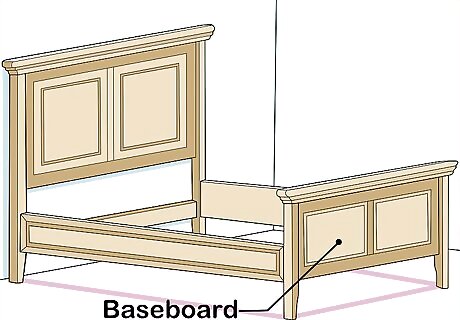
Connect the baseboard to the side rails. For most wooden bed frames, you can attach the baseboard using the exact same method as the headboard. However, since your baseboard is shorter than the headboard, the grooves or holes may look slightly different and any screws or nuts necessary to secure the baseboard may be smaller. Make sure the unfinished side of your frame points in.
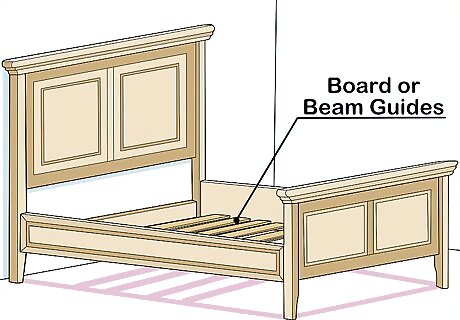
Attach board or beam guides to the side rails if necessary. Some side rails have small panels, holes, or ridges in them designed to hold center supports. If your bed frame does not have these, you may need to attach included guides using screws and nuts. Look for markings along your side rails indicating recommended drilling spots, then drill a hole in the wood and attach your support guides. If your side rails do not have any markings, count how many support guides you have and attach them to bed frame at equal distances.
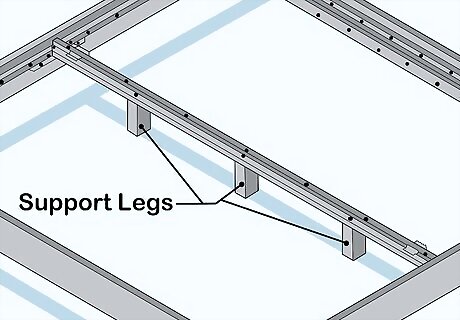
Add support legs to the center boards or beams if necessary. If your center boards or beams come with support legs, make sure to attach them before connecting the center supports to the rest of the frame. For some bed frames, this involves simply screwing the leg into the board or beam by hand. For others, you may need to drill a hole into the support and attach the leg using a nut.
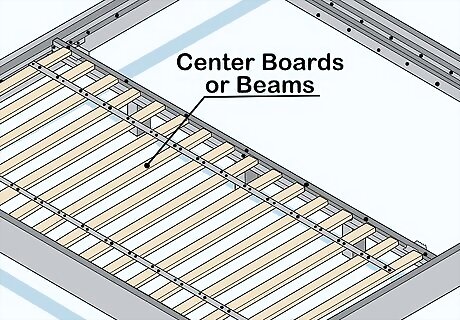
Connect the center boards or beams to the side rails. If your bed frame comes with wooden or metal support beams, lay them across the frame at equal distances. If you have wooden support panels instead, lay them on top of the frame. If necessary, secure your supports with screws and nuts or slide them into locking grooves or holes. If your bed frame comes with both center support beams and panels, secure your beams first then lay your panels on top.
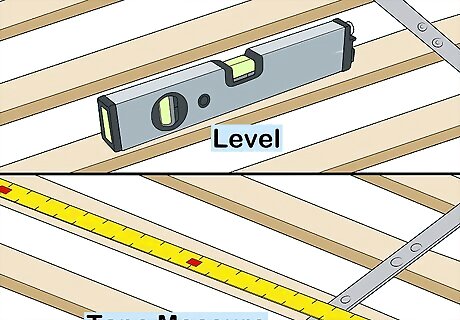
Check the frame with a level and tape measure. Before placing a mattress on top, place a level on your side rails and center supports to make sure the bed frame isn’t slanted. If you purchased an adjustable frame, use a tape measure to make sure it is the correct size for your mattress.



















Comments
0 comment